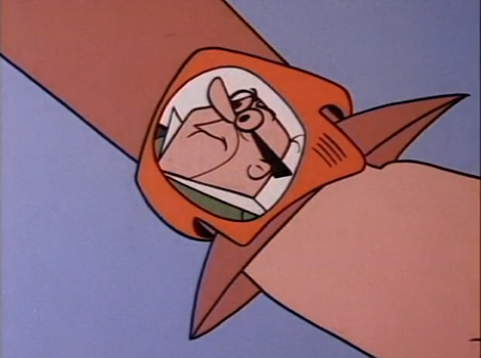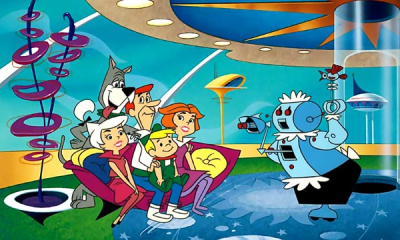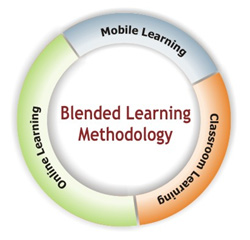Cognizant Computing in Your Pocket (or on your wrist)
 Two years ago, I wrote about the prediction that your ever-smarter phone will be smarter than you by 2017. We are half way there and I still feel superior to my phone - though I admit that it remembers things that I can't seem to retain, like my appointments, phone numbers, birthdays and such.
Two years ago, I wrote about the prediction that your ever-smarter phone will be smarter than you by 2017. We are half way there and I still feel superior to my phone - though I admit that it remembers things that I can't seem to retain, like my appointments, phone numbers, birthdays and such.
The image I used on that post was a watch/phone from The Jetsons TV show which today might make you think of the Apple watch which is connected to that ever smarter phone.
But the idea of cognizant computing is more about a device having knowledge of or being aware of your personal experiences and using that in its calculations. Smartphones will soon be able to predict a consumer’s next move, their next purchase or interpret actions based on what it knows, according to Gartner, Inc.
This insight will be performed based on an individual’s data gathered using cognizant computing — "the next step in personal cloud computing.
“Smartphones are becoming smarter, and will be smarter than you by 2017,” said Carolina Milanesi, Research Vice President at Gartner. “If there is heavy traffic, it will wake you up early for a meeting with your boss, or simply send an apology if it is a meeting with your colleague."
The device will gather contextual information from your calendar, its sensors, your location and all the personal data you allow it to gather. You may not even be aware of some of that data it is gathering. And that's what scares some people.
 When your phone became less important for making phone calls and added apps, a camera, locations and sensors, the lines between utility, social, knowledge, entertainment and productivity got very blurry.
When your phone became less important for making phone calls and added apps, a camera, locations and sensors, the lines between utility, social, knowledge, entertainment and productivity got very blurry.
But does it have anything to do with learning?
Researchers at Pennsylvania State University already announced plans to test out the usefulness in the classroom of eight Apple Watches this summer.
Back in the 1980s, there was much talk about Artificial Intelligence (AI). Researchers were going to figure out how we (well, really how "experts") do what they do and reduce those tasks to a set of rules that a computer could follow. The computer could be that expert. The machine would be able to diagnose disease, translate languages, even figure out what we wanted but didn’t know we wanted.
AI got lots of VC dollars thrown at it. But it was not much of a success.
Part of the (partial) failure can be attributed to a lack of computer processing power at the right price to accomplish those ambitious goals. The increase in power, drop in prices and the emergence of the cloud may have made the time for AI closer.
Still, I am not excited when I hear that this next phase will allow "services and advertising to be automatically tailored to consumer demands."
Gartner released a newer report on cognizant computing that continues that idea of it being "the strongest forces in consumer-focused IT" in the next few years.
Mobile devices, mobile apps, wearables, networking, services and the cloud is going to change educational use too, though I don't think anyone has any clear predictions.
Does more data make things smarter? Sometimes.
Will the Internet of Things and big data converge with analytics and make things smarter? Yes.
Is smarter better? When I started in education 40 years ago, I would have quickly answered "yes," but my answer is less certain these days.


 Students bringing their own devices to campus (known as BYOD) changes things. It changes technology policies and it lowers the cost of technology for blended-learning. Statistics are always changing but at least 75 percent of teens now own cellphones, according to a
Students bringing their own devices to campus (known as BYOD) changes things. It changes technology policies and it lowers the cost of technology for blended-learning. Statistics are always changing but at least 75 percent of teens now own cellphones, according to a 